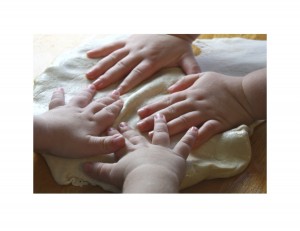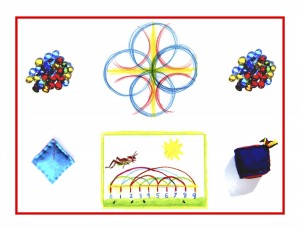Day 14
Two weeks! Nice to be able to measure this blogtime in weeks. Still standing at the bottom of the mountain looking up at that far-off peak, but the magic is in the journey. Hasn’t more than one sage said that the journey of a thousand miles begins with a single step?
It’s true that once an endeavor is begun, no matter how daunting, the view from the inside and “doing it” is easier than all of the anticipation. So don’t be afraid to get your feet wet or your hands dirty: go ahead and take the plunge, by striving for an education for your child(ren) that’s warm, sensible, fun, effective, (and not standardized).
For one year, 365 days, this blog will address the Common Core Standards from the perspective of creating an alternate, ambient learning environment for math. Ambient is defined as “existing or present on all sides, an all-encompassing atmosphere.” And ambient music is defined as: “Quiet and relaxing with melodies that repeat many times.”
Why ambient? A math teaching style that’s whole and all encompassing, with themes that repeat many times through the years, is most likely to be effective and successful. Today’s blog will focus on Kindergarten Standard 2, in Measurement and Data. Note that the Common Core Standards will appear in blue, followed by an ambient translation.
Measurement and Data K.MD
Describe and compare measurable attributes.
2. Directly compare two objects with a measurable attribute in common, to see which object has “more of”/”less of” the attribute, and describe the difference. For example, directly compare the heights of two children and describe one child as taller/shorter.
Cooking! And other food experiences are the perfect venue for working with this standard. In the kitchen or out in the garden, many opportunities arise for making these sort of observations. Stages of veggie growth, differences in the same foods’ taste, texture, or temperature depending on how it’s cooked, prepared, or served, are just a couple examples.
Cooking and eating yesterday’s stone soup for example. would be a wonderful way to make these observations and comparisons. Two of the staples in the Waldorf Kindergarten are food preparation and community meals, as breakfast and lunch are prepared and enjoyed every day. In these rushed and hectic times, it’s challenging to focus on the homely arts.
One of the great advantages of homeschooling is that it is so anchored in the daily life of the home. John Dewey’s philosophy of education revolved around experience, or setting teaching in an environment that immerses itself in life. This is so often precluded in the classroom because it doesn’t fit into a standardized curriculum.
Math is very comfortable with cooking! You really don’t need to set up formal lessons in measurement, just have your little ones at your elbow and helping whenever they can, as you prepare the family meals. Knowledge ensues in an environment dedicated to imaginative, creative knowing, where student and teacher alike surrender to the ensuing of that knowledge as a worthy goal. More Kindergarten tomorrow!













